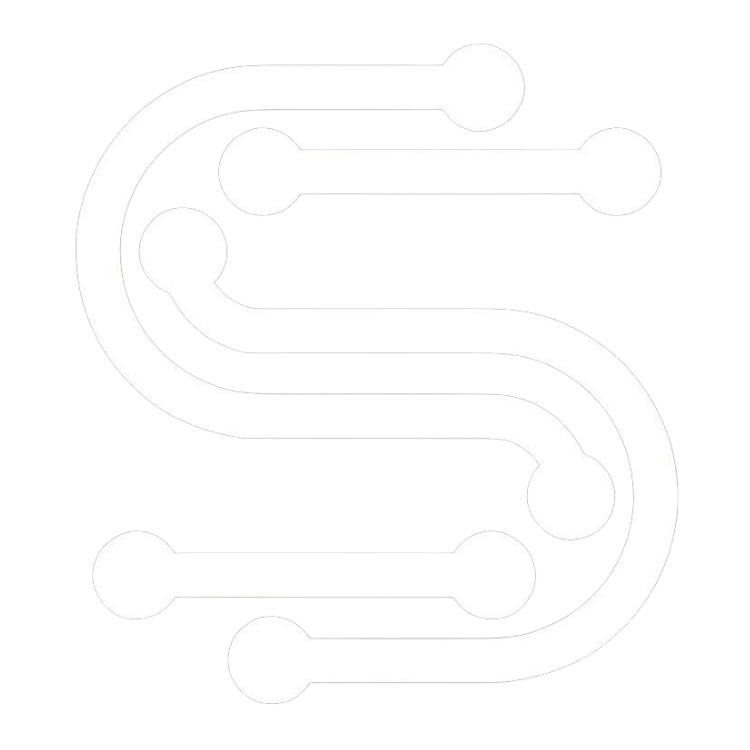Building your initial AI chatbot requires implementing core NLP components and conversation flows through a systematic development approach. You'll need to set up your IDE, integrate natural language processing libraries like NLTK or spaCy, and design intent classification using machine learning models. Configure your dialogue manager to maintain context, implement response generation logic, and establish error handling mechanisms. Deploying on cloud platforms like AWS or specialized services will help scale your solution. The complete technical walkthrough will transform your concept into a production-ready chatbot.
Understanding Chatbot Fundamentals and Types

Before diving into chatbot development, understanding the core architecture and classification of AI conversational systems is essential. Different chatbot types utilize varying levels of AI capabilities, from rule-based systems to advanced neural networks. You'll need to evaluate which architecture aligns with your intended user engagement goals and technical requirements.
Conversational design forms the foundation of your chatbot's interaction model. This encompasses dialog flows, context management, and natural language understanding components. Your deployment strategies should consider scalability, integration requirements, and hosting infrastructure. When implementing your chatbot, focus on measuring performance metrics such as response accuracy, conversation completion rates, and user satisfaction scores. These metrics will guide your optimization efforts and help refine the chatbot's effectiveness in real-world scenarios.
Setting Up Your Development Environment
Three essential components form the foundation of a strong chatbot development environment: an integrated development environment (IDE), required programming frameworks, and necessary API credentials.
Start by selecting a reliable IDE like VS Code or PyCharm that supports your chosen coding languages. Install version control systems like Git to track your project's evolution. Configure your environment variables to secure API keys and sensitive credentials.
Choose your IDE wisely and secure your credentials – these fundamental steps lay the groundwork for successful chatbot development.
Set up your project structure with clear directories for source code, tests, and documentation. Install software dependencies through package managers like pip or npm, guaranteeing compatibility with your framework's requirements. Implement debugging techniques through built-in IDE tools and logging mechanisms.
For peak development workflow, integrate essential development tools like linters, formatters, and testing frameworks. This systematic approach guarantees a stable foundation for your chatbot's development lifecycle.
Designing Your Chatbot's Conversation Flow

Mapping user intent requires implementing natural language processing algorithms to classify incoming messages into distinct conversational categories your chatbot can handle. You'll need to establish response logic through decision trees or state machines that determine how your chatbot processes user inputs and generates appropriate outputs based on context and intent classification. Testing conversation paths systematically validates your chatbot's ability to maintain coherent dialogue across multiple turns while handling edge cases and unexpected user inputs.
Map User Intent
Understanding how users will interact with your chatbot is essential for designing effective conversation flows. Through user intent analysis, you'll identify and categorize the primary ways users communicate with your system. This mapping process helps you develop precise response algorithms and optimize your chatbot's natural language processing capabilities.
- Analyze your target audience's common queries and create user intent examples, such as "booking appointments," "technical support," or "product information requests"
- Implement intent classification algorithms that can distinguish between similar but distinct user intentions, using machine learning models trained on labeled conversational data
- Design fallback mechanisms for when your chatbot encounters ambiguous or unrecognized intents, ensuring graceful handling of edge cases through intent confidence scoring and contextual analysis
Define Response Logic
Once you've identified user intents, your chatbot needs a strong response logic framework to determine how it'll react to each interaction. Design your response types using structured decision trees that map each user input to specific outputs.
Implement conditional logic that evaluates input parameters and context variables to select appropriate responses. Your decision trees should account for both direct answers and clarifying questions when user intent isn't clear. Consider implementing fallback responses for scenarios where the chatbot can't confidently match user input to predefined intents.
Create response priority levels within your logic framework to handle multiple potential matches. Structure your decision trees to initially check for exact intent matches, then partial matches, and ultimately default responses. This hierarchical approach guarantees your chatbot delivers relevant responses while maintaining conversation flow.
Test Conversation Paths
After establishing your response logic framework, you'll need to systematically test and validate the conversation paths through your chatbot's decision tree. Map out detailed user scenarios and implement conversation branching through thorough flowchart design. Your testing approach should evaluate response variations against anticipated user behaviors.
- Create test scripts that cover primary interaction examples, edge cases, and potential failure points in your chatbot's conversation flow
- Document user feedback during iterative testing sessions, focusing on natural language understanding accuracy and appropriate response selection
- Analyze conversation logs to identify patterns where branching logic needs refinement, guaranteeing smooth shifts between dialogue states
This systematic validation guarantees your chatbot handles diverse user inputs effectively while maintaining coherent conversation flows and meeting intended interaction objectives.
Building the Basic Chatbot Framework

To build a functional chatbot framework, you'll need to implement three core components: the natural language processor (NLP), the dialogue manager, and the response generator. These elements form the foundation of your chatbot architecture and directly impact user experience.
| Component | Function |
|---|---|
| NLP Engine | Processes user input, extracts intent |
| Dialogue Manager | Maintains conversation state, context |
| Response Generator | Creates appropriate replies, actions |
Your framework should process inputs through the NLP engine initially, which tokenizes and analyzes text patterns. The dialogue manager then tracks conversation flow and maintains context awareness. Ultimately, the response generator creates relevant outputs based on the processed information. Implement error handling and fallback responses to guarantee smooth interactions when the chatbot encounters unexpected inputs or ambiguous requests.
Adding Natural Language Processing Capabilities
Natural language processing forms the intelligence core of your chatbot, enabling it to understand and interpret user inputs through sophisticated linguistic analysis. By implementing natural language understanding algorithms, you'll transform raw text into structured data that your chatbot can process effectively. Sentiment analysis capabilities will help your bot detect user emotions and adapt responses accordingly.
NLP serves as the brain of chatbot systems, turning human language into structured data for intelligent, emotionally-aware conversations.
- Integrate NLTK or spaCy libraries to implement tokenization, part-of-speech tagging, and named entity recognition for improved text comprehension
- Deploy word embeddings (Word2Vec or GloVe) to capture semantic relationships between words and boost response accuracy
- Implement intent classification using machine learning models like BERT or RNNs to accurately categorize user queries and trigger appropriate response patterns
Configure these NLP components systematically to create a strong understanding pipeline that processes user inputs intelligently.
Testing and Refining Your Chatbot
While implementing core NLP capabilities establishes your chatbot's foundation, systematic testing and iterative refinement will optimize its real-world performance. Begin by conducting usability testing with a diverse user group to evaluate your chatbot's response accuracy and conversation flow. Track key performance metrics including user engagement rates, task completion times, and error frequencies.
Implement thorough error handling to gracefully manage edge cases and unexpected inputs. Analyze conversation logs to identify patterns in user interactions and potential bottlenecks. Deploy chatbot analytics tools to measure response latency, sentiment scores, and session duration metrics. Use this data to drive iterative improvements in your model's training and dialogue management.
Regularly collect user feedback through surveys and in-app prompts to understand pain points and feature requests, then systematically incorporate these insights into your development cycle.
Deploying Your Chatbot to Production
Deploying your chatbot requires selecting a suitable hosting platform that aligns with your technical requirements and scalability needs, such as AWS, Google Cloud, or Azure. You'll need to conduct thorough pre-deployment testing across multiple environments to validate your bot's performance, security, and integration capabilities. Once live, implement monitoring systems to track key metrics like response times, user engagement, and error rates, enabling you to optimize your chatbot's production performance through data-driven improvements.
Select Hosting Platform First
Before diving into chatbot development, selecting the right hosting platform is essential for successful production deployment. When comparing hosting options, you'll need to evaluate factors like scalability, cost-effectiveness, and technical requirements for your specific chatbot architecture.
- Cloud Platforms (AWS, Google Cloud, Azure): These offer strong infrastructure, built-in AI services, and auto-scaling capabilities, making them ideal for complex chatbots with high traffic demands.
- Specialized Chatbot Platforms (Dialogflow, Botpress, Rasa): These provide pre-built components, simplified deployment workflows, and integrated analytics, but may limit customization options.
- Self-hosted Solutions (Docker containers, VPS): These give you complete control over your infrastructure and data, but require more technical expertise for maintenance and scaling operations.
Choose a platform that aligns with your chatbot's complexity, budget constraints, and scalability requirements.
Test Before Going Live
Once you've built your chatbot's core functionality, extensive testing across multiple scenarios becomes critical to guarantee production readiness. Implement thorough testing strategies that cover user interactions, edge cases, and error handling protocols. Deploy automated testing scripts to simulate high-volume conversations and stress test your system's response times.
Create structured feedback loops by monitoring key performance metrics like response accuracy, conversation completion rates, and user satisfaction scores. Test your chatbot's natural language processing capabilities against diverse input variations, including misspellings and colloquialisms. Verify that your error handling mechanisms gracefully manage unexpected inputs and maintain contextual awareness throughout conversations.
Document all test results, fix identified issues, and iterate through improvements until your chatbot consistently meets predetermined performance thresholds before deploying to production.
Monitor Bot Performance
After your chatbot enters production, implementing strong monitoring systems becomes essential for tracking performance metrics and maintaining operational reliability. Monitor key indicators to optimize your bot's effectiveness and guarantee it's meeting user needs.
- Track conversation-level metrics including user engagement rates, successful query resolution percentages, and average session duration to identify potential bottlenecks or areas for improvement
- Implement error logging and exception handling to capture failed interactions, unexpected user inputs, and system timeouts that could impact bot performance
- Set up automated alerts for critical thresholds, such as response latency exceeding acceptable limits or sudden drops in successful query completions
Deploy analytics dashboards to visualize these metrics in real-time, enabling quick identification of issues and data-driven optimization of your chatbot's conversational flows and response algorithms.
